Sponge Swallowing and Gecko Glue
A safer way to test for Down's Syndrome and how sponge-swallowing could reveal oesophageal cancer feature in this week's Naked Scientists, along with a discovery that could delay diabetes in obese people and the nanotechnology that may let you climb walls like spider man! Plus, we hear from South Africa about why the bush meat industry is a problem, and how a new meningitis vaccine programme could safeguard millions of people.
In this episode
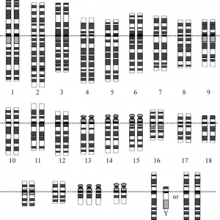
01:42 - DNA answer to Down's Screening
DNA answer to Down's Screening
Scientists have found a simpler and safer way to screen a pregnant woman's baby for Down's and other similar genetic disorders.
 Currently the diagnosis of genetic abnormalities requires doctors to obtain samples of foetal tissue, either by drawing out amniotic fluid from around the baby and analysing the cells it contains, or by removing a small piece of placental tissue known as a chorionic villus sample (CVS). In both cases there is a small by significant risk of miscarriage, and these forms of diagnosis also require a baby to be over about 14 weeks old (12 weeks in the case of CVS).
Currently the diagnosis of genetic abnormalities requires doctors to obtain samples of foetal tissue, either by drawing out amniotic fluid from around the baby and analysing the cells it contains, or by removing a small piece of placental tissue known as a chorionic villus sample (CVS). In both cases there is a small by significant risk of miscarriage, and these forms of diagnosis also require a baby to be over about 14 weeks old (12 weeks in the case of CVS).
But now Steve Quake and his colleagues at Stanford in the US have developed a technique to do the same diagnosis on a sample of the mother's blood. Their approach relies on the fact, discovered many years ago, that DNA (and to a lesser extent cells) from a developing foetus can "spill over" into the mother's bloodstream, where they can be analysed.
Writing in the journal PNAS the team analysed blood from 18 prospective mothers, 12 of whom were known to be carrying babies affected by Down's or two other conditions known as Edward's and Patau's syndromes. Each of these conditions occur when the baby has an extra copy of one of its chromosomes. The team diagnosed the condition by making copies of the DNA present in the mother's blood. Using the human genome map they were able to work out which chromosomes the copies were from and tot them up.
In a normal pregnancy, where both the baby and the mother carry the correct number of chromosomes, there should be the same number of DNA copies from all the chromosomes; but if the baby carries an extra chromosome number 21, as occurs in Down's, then there will be too many copies of the DNA from chromosome 21, alterting doctors to the problem.
Using this technique the researchers correctly identified all of the affected and normal pregnancies in the group of patients that they studied. And apart from being less invasive and therefore safer for mother and baby, there is another benefit to this approach.
According to Steve Quake the technique should work from as early as 5 weeks into a pregnancy, meaning that if termination is something a parent may elect to undergo they will know at a much earlier stage when the risks are lower and the process is much simpler.
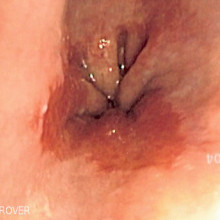
Sponge on a string could detect cancer
Oesophageal cancer, cancer of the foodpipe or gullet, is a growing problem in the UK. Not only are rates rising dramatically, but survival is often very low, mainly because the cancer isn't spotted until a very late stage when it's harder to treat.
 Now a new - but very simple - technique developed by Dr Rebecca Fitzgerald and her team at Cambridge University could help to identify those at greatest risk, so they can be offered preventive treatment.
Now a new - but very simple - technique developed by Dr Rebecca Fitzgerald and her team at Cambridge University could help to identify those at greatest risk, so they can be offered preventive treatment.
It all centres on detecting a condition called Barrett's oesophagus. This is a pre-cancerous condition usually caused by acid from the stomach coming back up into the gullet - you may know it as heartburn, and it's experienced by around one in ten of the population. Then around one in ten of those will develop Barrett's oesophagus.
The acid causes the cells of the oesophagus to change, becoming more like stomach cells. This also increases the likelihood that they'll turn into cancer, and around one in a hundred people with Barrett's oesophagus will go on to get oesophageal cancer.
Currently, doctors use a technique called endoscopy to look for Barrett's oesophagus in people with chronic heartburn. This involves having to go to hospital, and have a telescope put down your gullet. It's expensive for the NHS and inconvenient and uncomfortable for people. But Dr Fitzgerald have developed a simple technique to get round this.
At the GPs surgery, a person simply swallows a little capsule on a string, which then expands in their stomach into a little sponge ball. After a few minutes, a nurse pulls the sponge back up, which removes a sample of cells from the oesophagus. These can then be examined under the microscope for signs of Barrett's oesophagus.
A survey of the technique showed that patients far prefer the sponge on a string to endoscopy, and as mentioned already, it can be easily done in a GPs surgery.
If signs of Barrett's oesophagus are found, then patients can be offered preventive treatment, such as radiofrequency ablation, which can get rid of dodgy cells and prevent the development of oesophageal cancer. And there's also research to find out if aspirin and anti-acid drugs can helps to prevent the development of oesophageal cancer in these people.
Although the technique still needs some more work, we could see it in GPs surgeries in the next five years or so, and hopefully it will make a big impact on rising rates of oesophageal cancer.
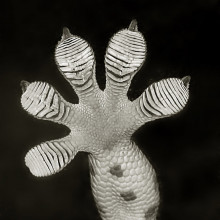
Gecko Glue
People have been fascinated by the ability of lizards called Geckos to chase their insect prey - not just on the ground, but up walls and even across the ceiling. Many scientists have tried to emulate their abilities, but up until now they have not managed to achieve the same level of stickiness.
 If you put two atoms very close together they will attract one another by what is called the van der waals force. This force holds materials like wax together, but normally if you push two objects together they don't stick because their surfaces are so rough that only very small areas touch. Geckos get around this by having millions of tiny hairs on their feet, hairs which branch into even tinier hairs at their ends. These hairs are flexible which means that when the Gecko pushes its feet onto the wall a large proportion of the tiny hairs are within an atoms breadth of the surface of the wall and so will stick to it. With feet like these, a Gecko can hold up about ten newtons of weight for every square centimeter of 'toe', (10N/cm2).
If you put two atoms very close together they will attract one another by what is called the van der waals force. This force holds materials like wax together, but normally if you push two objects together they don't stick because their surfaces are so rough that only very small areas touch. Geckos get around this by having millions of tiny hairs on their feet, hairs which branch into even tinier hairs at their ends. These hairs are flexible which means that when the Gecko pushes its feet onto the wall a large proportion of the tiny hairs are within an atoms breadth of the surface of the wall and so will stick to it. With feet like these, a Gecko can hold up about ten newtons of weight for every square centimeter of 'toe', (10N/cm2).
Scientists have been trying to copy this technique using carbon nanotubes, as they can be long and thin like the hairs on the Gecko's toes. So far, they've not had much success, but now, Liming Dai and colleagues at the University of Dayton have used carbon nanotubes with very flexible tangled ends. If you push them onto a material then the the tangled ends get very close to the surface, and stick through van der walls effects. If you then try to slide it off, the flexible ends of the tubes will drag across the material increasing the area of contact and therefore the stickyness.
Material made from these nanotubes is capable of supporting a force of 100N (or 10kg), but it does need to be pushed on to the wall with about 50N for every square centimeter in order to make it stick. This is far more than a real geckos foot requires and would make a spiderman suit a bit impractical.
However, it does have some other advantages - the nanotubes conduct electricity so it could be used instead of solder for making good electrical contacts, and, unlike many glues, they won't be affected by the vacuum of space.
So, for now, they will probably be more useful holding spaceships together than allowing people to climb buildings like their favourite web-slinging superhero!
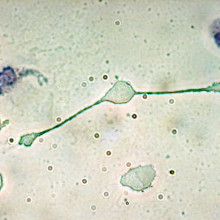
Giant-eater cells key to fat-diabetes link
Scientists have discovered the cellular culprit that causes obese individuals to develop diabetes.
 Writing in this weeks' Cell Metabolism, University of California San Diego researcher David Patsouris and his colleagues have found that an angry immune cell could be to blame. Ironically the cells involved are macrophages, Greek for "giant eaters". These are long-lived cells whose job it is to engulf and break down damaged and infectious material. But in obese individuals, in this case mice fed the rodent equivalent of junk food, a population of the cells move into muscle and fat tissue around the body and interfere with the body's handling of glucose and its sensitivity to the sugar-regulating hormone insulin.
Writing in this weeks' Cell Metabolism, University of California San Diego researcher David Patsouris and his colleagues have found that an angry immune cell could be to blame. Ironically the cells involved are macrophages, Greek for "giant eaters". These are long-lived cells whose job it is to engulf and break down damaged and infectious material. But in obese individuals, in this case mice fed the rodent equivalent of junk food, a population of the cells move into muscle and fat tissue around the body and interfere with the body's handling of glucose and its sensitivity to the sugar-regulating hormone insulin.
Now, in an elegant series of experiments, the team have identified a chemical marker, CD11c, which is present on the surfaces of just these errant macrophages. This has enabled the researchers to selectively kill the cells by targeting them with the toxin made by diptheria bacteria. When this occurs in obese mice the animals show immediate and dramatic improvements in insulin and sugar levels and also markers of inflammation significantly decrease.
This suggests, the team say, that the same trick might work in humans by using the marker they have identified to target this cell population, either with drugs to shut down or disable the cells.
Exactly how the CD11c-positive macrophages are altering metabolism in this way for the moment remains a mystery, but one the researchers are hungry to get their teeth into solving.
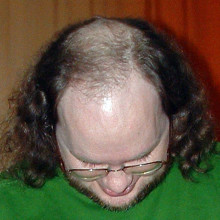
Male baldness genes found
Good news for any of our listeners who are thinning on top - two papers in Nature Genetics this week reveal genetic variations that contribute to male pattern baldness, which affects around a third if men by the time they're 45. It's the classic pattern of baldness where hair starts thinning at the temples. It's thought to be hereditary in around eight out of ten cases.
 Researchers have known for some time that there must be a gene linked to hair loss on the X chromosome - the female sex chromosome. This is the basis of the idea that baldness is inherited from the mother's side of the family. But the evidence has pointed to the role of other genes, which have been unknown until now.
Researchers have known for some time that there must be a gene linked to hair loss on the X chromosome - the female sex chromosome. This is the basis of the idea that baldness is inherited from the mother's side of the family. But the evidence has pointed to the role of other genes, which have been unknown until now.
The first paper, from scientists at McGill University, King's College London and GlaxoSmithKline Inc. describes two genetic variants in Caucasian men that, if found together, increase a man's risk of baldness by seven times. To find them, the researchers scanned through the genomes of 1,125 men who had been assessed for male pattern baldness.
The team found two previously unknown gene variations on chromosome 20 that substantially increased the risk of male pattern baldness. They then confirmed these findings in an additional 1,650 men. And rather surprisingly, the scientists showed that one in seven men carry both of the baldness variations.
Another team of scientists at Bonn and Dusseldorf Universities carried out similar studies on 300 men with hair loss, and pinned down an area of the genome on the X chromosome containing the androgen receptor, which binds male sex hormones. Previous research had already shown a role for this gene in baldness. But the study also revealed the same region on chromosome 20 that was also found by the team mentioned earlier.
The discovery of a gene linked to baldness that isn't on the X chromosome, which can only be inherited from the mother, may explain the similarity between hair loss patterns in fathers and sons.
Sadly, although the researchers say their discovery is a scientific breakthrough, they caution that it does not mean a treatment or cure for male pattern baldness is around the corner. But they suggest that being able to predict if someone might lose their hair could lead to effective preventive strategies.

Cylindrical Solar Cells
At the moment, whilst solar cells are clean and environmentally friendly, the electricity they produce is still 3-4 times more expensive than electricity produced from fossil fuels such as coal. Part of the problem is their high captial cost of manufacture, but a less well known problem is the cost of installation. Because conventional solar cells are large and flat, they act like a great big sail in high winds, so they need to be securely bolted down. This is very expensive in terms of materials and time, especially if you are installing them on to an existing roof and in many cases this installation is more expensive than the solar cell itself.
 A company called Solyndra is starting mass production of a solar cell which may solve this problem. They are using thin film copper indium gallium selenide cells which only use a very thin layer of semiconductor, using less materials than conventional cells which should make the cell itself cheaper. Instead of making the solar cells into flat plates, they then form them into tubes about 3cm across. This means that they can pick up light from any direction and if you paint the roof white they will also be able to pick up reflected light from the bottom too! More importantly it means that the wind can move between them, stopping the 'sail' effect of traditional sheets of cells. This means that you don't have to bolt them down on a flat industrial roof and makes the cost of their electricity competitive with that from a fossil fuel plant.
A company called Solyndra is starting mass production of a solar cell which may solve this problem. They are using thin film copper indium gallium selenide cells which only use a very thin layer of semiconductor, using less materials than conventional cells which should make the cell itself cheaper. Instead of making the solar cells into flat plates, they then form them into tubes about 3cm across. This means that they can pick up light from any direction and if you paint the roof white they will also be able to pick up reflected light from the bottom too! More importantly it means that the wind can move between them, stopping the 'sail' effect of traditional sheets of cells. This means that you don't have to bolt them down on a flat industrial roof and makes the cost of their electricity competitive with that from a fossil fuel plant.





Comments
Add a comment